10 Largest Stadiums in Africa.
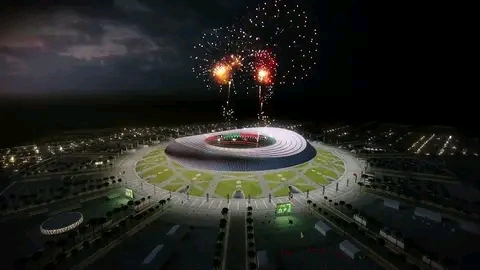
Here is the list of 10 largest stadiums in Africa.
Which stadium is the largest stadium in Africa???
Table of Contents
The list of Largest stadiums in Africa keeps on changing due to recent investments in the sports infrastructure across the continent. For past 10yrs, African nations have really invested much on football infrastructure and football in general. African continent have only hosted the FIFA world cup once, when South Africa hosted in 2010. Africa will have another chance to host the world cup, as Morocco won the joint bid with Spain and Portugal to host the 2030 FIFA world cup.
African continent is known to have produced great footballers, but stadiums and training infrastructure have been the biggest challenge due to poor governance and corruption.

African football seems to be making slow progress but the future seems bright.Many nations have started to invest on football infrastructure to develop football talents in their nation.
Here are the 10 largest stadiums in Africa;
1:Casablanca Stadium – Capacity (113,000) – Morocco.
Morocco confirms it will build a new megastadium (the world’s 2nd largest) that could host the final of the 2030 FIFA World Cup!

The new stadium, which shall be located near Casablanca, shall have a capacity of 113,000 seats, making it the world’s second largest, only second to the Rungrado Primero de Mayo in Pyongyang, North Korea, with a capacity for 114,000 people.
The new Morocco stadium shall cost 500 million euros. Spanish architects Cruz and Ortiz, who designed Atletico Madrid’s Metropolitano stadium among others, are in charge of the project.
With this stadium, Morocco hopes to beat Spain and Portugal to hosting the World Cup final.
Casablanca Stadium will be the Largest stadium in Africa,and second in the world.
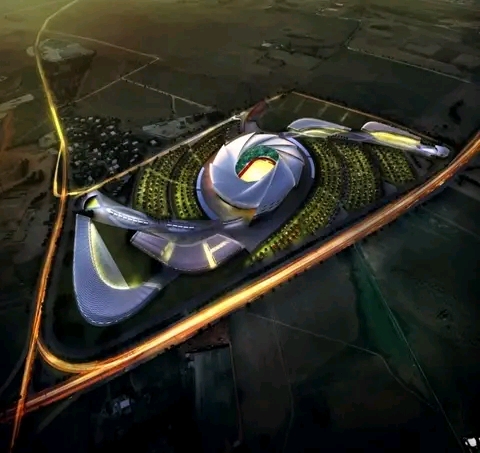
2: FNB Stadium – Capacity (94,736) – South Africa.
The FNB Stadium was built in 1989 between Soweto and Johannesburg and is the largest stadium in South Africa and Africa at the moment.
It underwent a complete reconstruction in 2006-2009 in preparation for the 2010 world cup, during which it was known as Soccer City.

Apart from hosting various sports and entertainment events, this stadium holds a special connection to Nelson Mandela. It’s where he first spoke after his release and made his final public appearance in 2010,as well as the venue for his memorial ceremonies in 2013.
3: Borg El Arab Stadium – Capacity (86,000) – Egypt.
Located to the west of Alexandria,near the Mediterranean coast,Borg El Arab Stadium is one of Egypt largest stadiums, designed to accommodate 86,000 spectators on the upper and lower levels. The exclusive VIP cabin has 22 seats, and the terrace can hold 300 spectators.
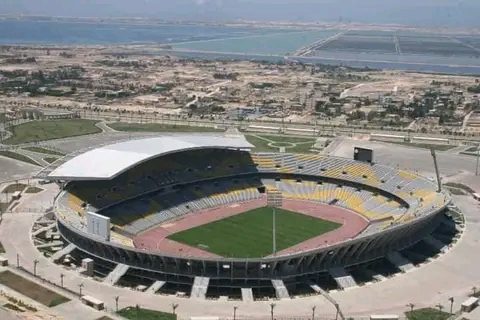
Borg El Arab Stadium,was originally part of Egypt’s bid for the 2010 FIFA world cup, which they lost to South Africa.The stadium became the home ground for the Egyptian national team alongside Cairo international stadium after the Bid’s failure.
4: Stade des Martrys de la pentecôte – Capacity (80,000) – DRC Congo
Formerly known as Stade Kamanyola,Stade des Martrys de la pentecôte is the national stadium of the Democratic Republic of Congo which is situated in Kinshasa,the capital City of DRC.
With a sitting capacity of 80,000 spectators,it stands as the largest stadium in DRC Congo and fourth among the largest stadiums in Africa.
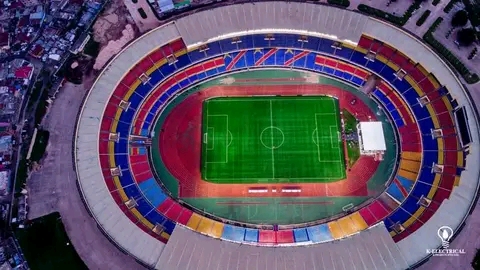
This Multifunctional venue serves as the home stadium for the Congolese national football team, As Villa club and DCMP.
5: Cairo International Stadium – Capacity (75,000) – Egypt.
Ranked as the fifth largest stadium in Africa and 70th worldwide, Cairo International Stadium is located in Cairo, Egypt.
It was one of the 2006 Africa cup of nations venues, originally known as Naseer stadium.it boasts an all seated capacity of 75,000 and was designed by the German architect Werner March,known for the Olympic stadium in Berlin. The construction was supervised by ACE Moharram Bakhoum.

6: Stade du 5 Juillet – Capacity (64,000) – Algeria
Named after the Algerian Independence day on July 5th 1962, this stadium in located in Algiers, Algeria, and can hold 64,000 spectators.
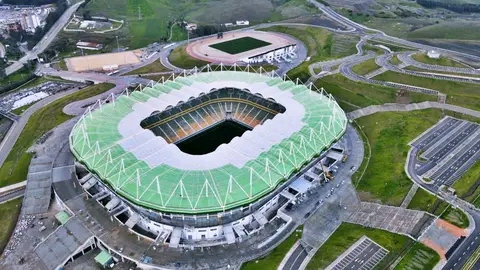
In a memorable event,it hosted 110,000 people when Algeria played Serbia in a friendly match in 2010.The stadium features a playing field measuring 105m by 68m and has undergone multiple renovations lately.
7: Moshood Abiola National stadium – Capacity (60,491) – Nigeria
Formerly known as Abuja national stadium,it’s situated in Abuja,the Federal capital territory of Nigeria.Thus stadium is not only a home for the Nigerian national team but also centre of various social, cultural and religious events.

It features two overlapping spectators tier with the lower their accommodating 32,000 seats and the upper tier with 28,000 seats. The lower tier also includes 56 corporate suites and a presidential lounge for 50 guests.
8: Moi International Sports centre – Capacity (60,000) – Kenya
Commonly known as Kasarani stadium, it was constructed in 1987 for the All- Africa games in Nairobi, Kenya.
This multipurpose complex is the largest stadium in Kenya and offers various facilities, including modern changing rooms,shops restaurants, internet hotspots and conference rooms.This complex also includes a competition- size swimming pool,an indoor arena and a 108 bed capacity.
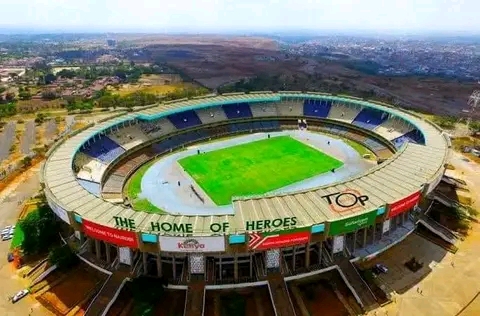
It one of the stadium that will host the 2027 Afcon,after Kenya won a joint bid with Tanzania and Uganda to host the 2027 Afcon.
9: Estádio 11 de Novembro – Capacity (50,000) – Angola.
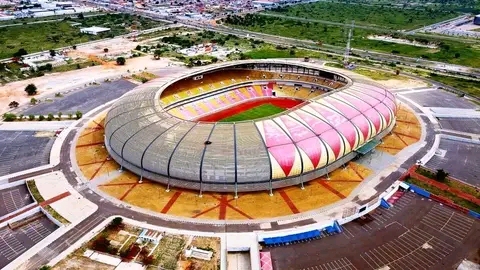
Named after Angola Independence date, Estádio 11 de Novembro is a multi-purpose stadium in Talatona, Angola. It was completed in 2010 ahead of the 2010 Africa Cup of nations.
An unfortunate incident occured in 2018, where 5 people were reportedly killed due to a tragedy during exit, including two children.
10: Nelson Mandela Bay Stadium – Capacity (49,000) – South Africa
The Nelson Mandela Bay Stadium, located in Gqeberha, South Africa,hosted matches during the 2010 FIFA world cup and the third place play off.
It serves as home ground for Chippa United football club and previously for the rugby union team Southern Kings.

The stadium has a seating capacity of approximately 49,000 spectators and features amenities like ramp for wheelchair access, VIP/VVIP lifts, and multiple service lifts.








